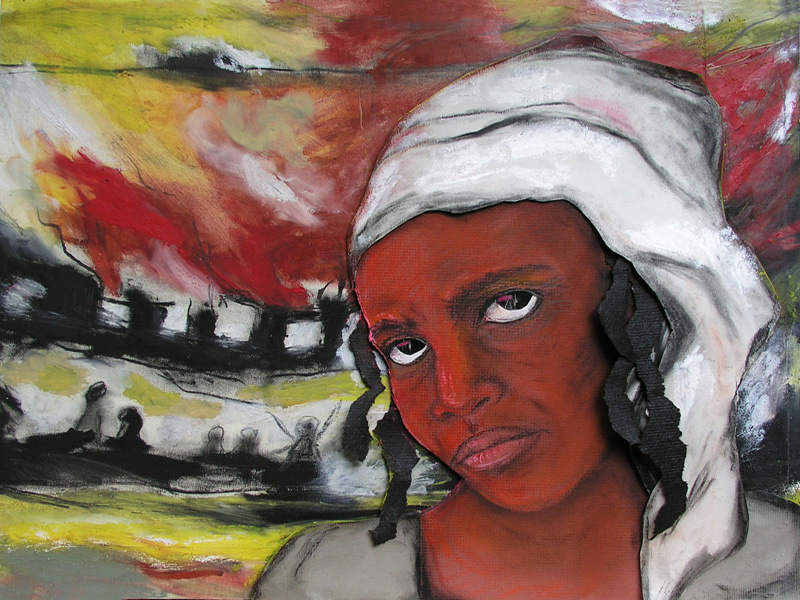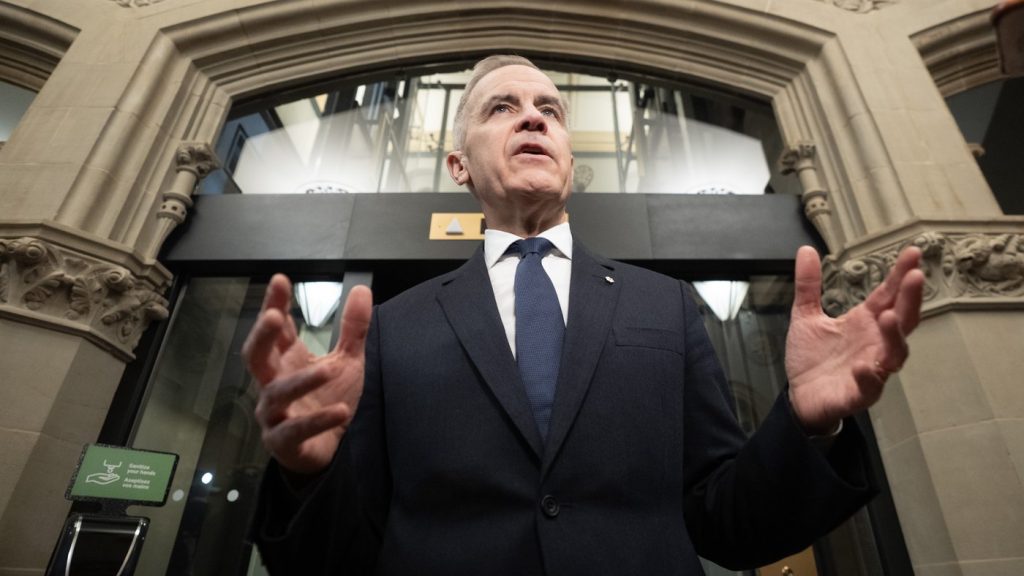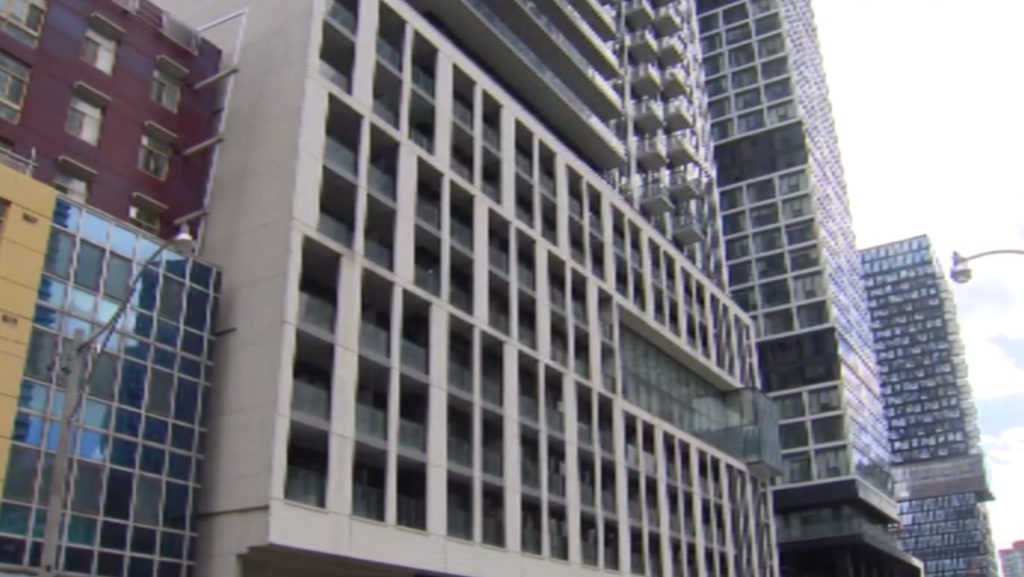Anti-Black racism: the story of Marie-Josèphe Angélique and the 1734 fire of Old Montreal

Posted July 15, 2020 9:38 am.
Last Updated July 15, 2020 10:28 am.
CityNews has launched an online series that documents Canada’s anti-Black racist history, providing you with written snapshots that highlight different moments. You can read the first installment about the Immigration Act of 1910 and the story of Toronto’s first Black politician.
On April 10, 1734, around 7 p.m., a fire in Old Montreal, then New France, destroyed 46 homes and the Hotel-Dieu hospital. The fire spread quickly due to the wind that night. Within in hours, rumours began to spread about how the blaze had been set.
The subject of those rumours was a Black slave named Marie-Josèphe Angélique. The rumour was Angélique and her white lover Claude Thibault had set the blaze in order to be rid of her mistress Thérèse de Couagne.
Within three months, Angélique was convicted of arson, sentenced to death and hanged. Not one of the 22 witnesses who testified at her trial said they had seen her set the fire.
Her lover Thibault fled and was never seen again. The charges against him were eventually dropped.
The fire of April 10, 1734 and the trial of Marie-Josephe Angélique
Marie-Josèphe Angélique was born in 1705 in Madeira, Portugal. Little is known about her early life, but she was sold at the age of 20 to François Poulin de Francheville, a fur trader and the husband of Therese de Couagne in New England. He brought her to Montreal and when he died, her ownership was transferred to de Couagne.
Angélique was one of many enslaved Black people in Montreal.
According to the book The Hanging of Angélique, Angélique had asked de Couagne for her freedom in December of 1733, which she denied.
Shortly after, it was rumoured that de Couagne sold Angélique to someone in Quebec City. However, de Couagne had to wait for the ice to thaw to send Angélique on the journey to Quebec City on the St. Lawrence River. The fire happened before that could happen.
Several homes, shops and the hospital burned to the ground during the fire and hundreds of people were left out on the streets.
Many of the homes were owned by some of the richest people in Montreal at the time.
On April 11, Marie-Josèphe Angélique was accused of arson based on the rumours spreading through the area and was arrested.
Due to the laws of the time, Angélique was not allowed to be present at her trial and did not have a lawyer to represent her.
Over 20 witnesses testified at her trial, and while not one said they had seen her light the fire, they all had believed Angélique started it.
Angélique maintained her innocence throughout the trial and her conviction. She would eventually confess to setting the fire after being tortured. According to The Hanging of Angélique, the judge had intended on getting a confession and if she refused, torture was applied to extract one.
She was hanged and her body was burned on June 21, 1734.
Was she guilty or innocent?
Historian, writer and poet Dr. Afua Cooper says she believes Angélique did start the fire, saying she had enough motive to do so.
Dr. Cooper, who wrote the book The Hanging of Angélique, said she hated her mistress and wanted to run away from slavery.
“Let us remember that arson was a tool of resistance commonly used by enslaved Africans,” wrote Dr. Cooper in The Hanging of Angélique.
“As a slave, she was alienated form security; as a slave she was the lowest of the low. Perhaps she set the fire to cover her tracks while fleeing and wreak vengeance upon Montreal as a bonus.”
In contrast, Historian and archivist Denyse Beaugrand-Champagne says she believes Angélique is innocent.
Beaugrand-Champagne wrote the book, Le Procès de Marie-Josèphe-Angélique, about Angélique’s trial. She also was a major contributor to the website, Torture and the Truth: Angélique and the burning of Montreal, which is a collection of documents related to the trial of Angélique and the fire itself.
Her theory is the fire was accident, actually starting in the house next door to de Couagne’s residence.
Beaugrand-Champagne says Angélique was the easy scapegoat due to her “strong personality,” which was evident in the trial transcript, and they needed to find a guilty party. “People complained about her public conduct, that it wasn’t good for their slaves to see,” Beaugrand-Champagne tells CityNews.
As she explains, all the evidence was based on witness statements yet, “They all testify I don’t who set the fire, but I’m sure it was Angélique because she is not polite … solely because of her personality or public conduct.”
Angélique’s legacy
Despite the dramatic story of Angélique, few people actually know about her and the fire. It is a story relatively unknown in Canada.
“That story wasn’t hidden in government documents, but it wasn’t a story Canadian Historians, whether French or English, would talk about. So, it was something that was put under the carpet,” said Dr. Cooper during the CityLine’s first episode on race, focused on Black Canadian history.
“Black history is treated as a marginal subject. In truth, it has been bulldozed and ploughed over, slavery in particular,” wrote Dr. Cooper in her book.
“The story of Angélique provides an opportunity for us to reclaim a hidden past. Since much of the Black past has been deliberately buried, covered over and demolished, it is our task to unearth, uncover, and piece it together again.”
If you would like to learn more about Maire-Joseph Angélique, you can find the book The Hanging of Angélique at the Toronto Public Library or read the website: Torture and the Truth: Angélique and the burning of Montreal.
Dr. Afua Cooper also wrote a poem inspired by Marie-Jospeh Ange. You can find it here.








